Choosing the most beautiful and suitable fish for an aquarium can quickly become overly complicated, especially for beginner aquarists. The world of an aquarium is as diverse as its inhabitants are. There are dozens of fish species available on the market, but not all of them are equally suitable for your home aquarium. The requirements for food, plants, lighting and water quality and temperature vary depending on the species of fish and should be considered when choosing aquarium roommates. In addition, you need to make sure that the selected fish will live well with each other.
Farming ornamental fish is becoming the passion of more and more animal lovers: No wonder, after all, the sight of the extremely colorful underwater world of sea creatures is not only fascinating and mesmerizing, but also has a calming effect in the hectic everyday life. Which fish are best for a home aquarium?
Over 12.5 million households keep freshwater fish in the US, they account for the largest proportion of pets owned across America, and it is no surprise that they are the top choice of pet.
Most of the species that we will look at here are easy to care for, they bring beauty and color to your homes and they are very relaxing to watch.
**PICK THE FISH**
Goldfish
When you think of a fish tank, you almost instantly think of goldfish in a fish bowl. Few people know that they can actually grow up to 14 inches in the wild. The minimum tank size for a goldfish is 20 gallons, you will also need a filter and to perform 10-15% weekly water changes, because those fish produce high levels of ammonia. There are many different varieties of goldfish, and it is fine to mix them as long as they are not breeds that would compete with each other for food
Neon Tetra
Neon Tetras are a small, easy-to-care-for species. This popular aquarium species is often one of the first fish a beginner aquarist will buy. They like to be kept in groups. Neon Tetras come in bright colors and have an iridescent blue horizontal strip across their body (so they are visible in dark waters).
Indian Glassfish
Indian Glassfish come from the clear forest streams of Myanmar. These unusual, almost transparent fishes are reasonably easy to care for, although they do need to live in a school in a well-oxygenated tank with excellent filtration and plenty of open water swimming space.
Glassfish have quite peaceful character , even though they have been known to hunt and eat smaller tetras, so keep that that in mind.
Pearl Gourami
The Pearl Gourami is a relatively large, but peaceful fish and one of the easiest to keep. They can live together with other fish of a similar size and temperament; however, you should not mix them with more aggressive fish. Pearl Gourami’s are omnivorous and should be fed algae-based foods and meaty foods.
Guppies
This colorful and lively fish is able to adapt to a variety of water conditions which is one of the reasons they are so popular. They are also extremely easy to care for. You should keep guppies in sets of threes, and a good guide for the tank size is 1 gallon of water per guppy. Males are much more colorful and vibrant than females.
African Cichlids
The term “African Cichlid” is a wide term that describes the multitude of over 1200 different Cichlid species (most popular include the Yellow Lab Cichlid, Peacock Cichlid, and Zebra Cichlid). The general rule is that the African Cichlids tend to be colorful. As with most cichlids, though, they can be a bit aggressive – choose tank mates carefully if you want to house them with other species.
Harlequin Rasboras
This small, cute fish ( Cyprinidae Family ) became an instant favorite among aquarists after its introduction in the early 1900s. The harlequin rasbora is a native of Malaysia, Singapore, Sumatra, and southern Thailand. It naturally comes in pink-orange hue. You can keep harlequins with any fish as long it is not large and predatory. It will not nip at or quarrel with any other species. Some potentially good tankmates may include cardinal tetras, bettas, neon tetras, small barbs, dwarf gouramis, danios, other small rasboras, and cory catfish.
Oscar
Oscars are thought to be one of the most intelligent aquarium fish. They are one of the few species that can be trained to perform various tricks; they are one of the few species you can hand feed; they will often eat food from between your fingers. Nevertheless, they are not community fish, they should be kept in a species-only tank, and they can grow exceptionally large, very quickly. They require a lot more maintenance than other fish, due to their carnivorous nature and the amount of waste they bodies are producing.
American Flagfish
The American Flagfish is an easy-to-care-for fish. It is well-known for both its algae-eating services and its stunning colors. The fish is named for the American flag, having alternated red and creamy green stripes running horizontally across its body and sparkling scales that are reminiscent of the stars on the flag. American Flagfishes thrive in community tanks and even in small outdoor ponds, preferring dense planting and cover provided by floating plants.
Mollies
This small, peaceful species grow to around 3-4 inches and adapt well to a variety of water conditions. Mollies are omnivorous and will require a diet of both plant and animal food. Mollies are extremely easy to care for, but they also breed very easily, so if you are a beginner you might want to keep just a single sex.
Zebra Danios – Zebrafish (Danio)
The Zebra Danios make the perfect beginner fish, they are amazingly easy to care for. Danios are known to jump so you may want to keep your tank covered! Danios are schooling fish and will become stressed if their numbers are too lows. They are not fussy eaters and will eat most foods.
Angelfish
Angelfish are a member of the same (Cichlid) family , that include as well: Discus, Oscars, and Parrot fish. There are many different types of angelfish. They can grow up to 6 inches in length, 8 inches tall, and come in a variety of colors and patterns. As they mature, they can become aggressive, especially if your tank is overcrowded. In general, though, they are a good community fish, just do not keep them with small fish or fin-nipping species.
Honey Gourami
The Honey Gourami is a close relative of the Dwarf Gourami. These fish that enjoy life in a heavily planted tank that includes floating plants. Honey Gouramis are peaceful fishes that make good community residents. These fish are not the easiest to keep healthy, and for that reason, we do not recommend them to beginner hobbyists.
Gold Barb
The gold barb is a large and flamboyant schooling fish. It has a shiny gold body with black flecking and bright red fins. Planted aquariums are especially good at drawing out the color of these fish, which will attract a lot of attention to your tank. If they school is too small, they will become unhappy and uncomfortable in their school, they may strike out at other species in the tank. Luckily, this is an easy fix. Just add few more gold barbs.
Swordtails
The swordtail is similar in shape to guppy fish, with a slightly bulkier body, and a sword-shaped extension of its fin. This unique trait makes them a great attention grabber in any community aquarium. There are many different color variations available, and they are quite hardy which makes them a perfect species for the beginner aquarist. Swordtails are usually peaceful, yet lively. They thrive in community tanks and like to swim in loosely grouped schools.
Convict Cichlid
Also known under the zebra cichlid name. the males grows up to 6 inches ( females up to 4.5 ). They can be kept in a group, but preferably only among its own species. They have tendency to be slightly aggressive and very territorial. Either way they are stunning to look at.
Discus
Discus are considered the “ the most prices asset ” for many freshwater fish keepers. These amazingly colorful freshwater fish come in an assortment of patterns and are identifiable by their distinctive red irises. Unfortunately, they are high maintenance fish due to its requirement for extremely clean water with a specific pH level of 5-7. Discus prefer aquariums with dense foliage and natural hiding spots to mimic the environment of their wild counterparts. Their dazzling striped pattern and striking colors of the Discus make it a popular choice for freshwater aquariums.
Clown Loach
Clown loaches have large, daring, vertical black and yellow stripes, which make them easily recognizable in any aquarium. They are energetic and have to be kept in groups, but the bigger the tank you put them in, the happier and more active they will become. Clown loaches do require quite a few hiding areas in order to be safe and stress free.
GloFish Danio
GloFish danios are just about the brightest freshwater fishes that you can get! These stunning little fishes make the ideal starter fish for a kid’s tank or an eye-catching specialty aquarium. These captive-bred danios are available in super-bright red, green, orange, blue, and purple. The colors are completely natural and produced through genetics, rather than artificial dyes, so the color does not fade. Keep these peaceful fishes in small schools in species-only tanks or with other non-aggressive companions.
Killifish
Killifish come in a wide variety of bright colors. They are extremely hardy fish, and there are over 700 species – a breed to suit almost every tank condition. They are generally peaceful fish and do well in community tanks with other small, non-aggressive fish. It is best to keep just one male to each tank though, because they can be aggressive towards each other.
Plecostomus/Pleco
Plecs are a breed of catfish, they have heavy armored plates on their bodies, and sucker-shaped mouths to feed on the algae in your tank. Whilst some species are happy eating algae, wafers, and flakes, others will need meaty food. Plecos can live for 20 years, sometimes longer if cared for correctly. It is also worth knowing that they can jump too – so keep a lid on your tank. They can be housed with many different species but avoid keeping them with fat/flat-bodied fish such as goldfish as they may suck on them.
Rainbowfish
Rainbowfish originally live in Australia and Southeast Asia. They are a peaceful schooling fish, that will get along well with other schooling fish such as danios, bards, and larger tetras. This is perhaps one of the least common fish that we are featuring here, perhaps because its colors only begin to show as they enter adulthood…
Roseline Torpedo Shark
Known also as the Denison Barb and Red Lined Torpedo Shark. These are peaceful characters that make a pretty addition to a large community tank. You can keep these fishes in small schools in a tank, but you must remember to have a tightly fitting lid, because those fish love to jump. You will need a setup with a decent flow to replicate the fast-moving streams in which the Roseline Torpedo Shark is found in nature. These active freshwater sharks enjoy an omnivorous diet of flaked food and meaty protein.
Electric Blue Hap
The ancestors of Electric Blue Haps lived only in Lake Malawi in East Africa. But now they live in aquariums all over the world. Those beautiful fish have long, slender-bodied fish. Males are bright blue with darker blue vertical bars. Females are much smaller, and do not display such a beautiful colors as males. The males can grow even up to 8 inches ( when females are reaching about 6.5 inch). They thrive in pretty warm water ( 75 – 80 F). unfortunately, they be aggressive at times.
German Blue Ram
The Ram is sometimes called the Bulldog of fish tank, due to its fierce appearance. With its spiked dorsal fin, can be a little intimidating, however this fish is more social and peaceful freshwater fish. In fact, most Rams will actively swim with equally non-aggressive members of your community aquarium and are known to faithfully pair with just one other mate. The German Blue Ram is known for its speckled deep blue specks of color. It feels comfortable to be in a water, with temperatures between 77° and 82°F.
Royal Whiptail Catfish
Also known as The Royal Farlowella or Twig. The Royal Whiptail catfish is an armored catfish with a long, slender tail and an elongated nose. These totally cool fish have a sucker mouth that they use to feed on algae, helping to keep your plants and decorations clean. These helpful fish are peaceful creatures that make an excellent addition to a community setup. You do need a large tank for these guys that has plenty of hiding places, including plants, rocks, and driftwood.
Red Wagtail Platy
The Platy is a popular favorite that is ideal for beginners, being easy to care for and extremely quick to reproduce in the home tank. Red Wagtail Platys are a variation that adds a brilliant splash of color to a peaceful community aquarium. These fish are ideal for kids’ pets, as they do not need a huge tank and are tolerant of a variety of water conditions. These energetic, sociable fish can be kept in large schools in a bigger tank to create a spectacular, colorful display.
Bolivian ram
It is the correct choice for planted community tanks as maintaining them is quite easy. This peaceful, calm, and good-tempered cichlid species is quite hardy and lives successfully in a standard fish tank. You may find them a little more aggressive, but they are more like to scare other fish rather than attacking or hurting them. They are simply fine living as a single fish, and also a group of 6-8 species of its kind fits them better.
Bloodfin Tetra
These peaceful little fish make a nice addition to a community setup, although they should not be kept with species that are more aggressive. The shy tetras will look for a hide out place and stay there. Bloodfin Tetras create a spectacular display when kept in schools in a well-designed, full of plants and decorations tank containing plenty of plants, rocks, and driftwood. Leave plenty of swimming space in the midwater column, perhaps interspersed with tall plants.
Celestial Pearl Danio
Those are beautiful long-bodied fish with dark green body covered in bright yellow dots. Bright red/orange belly and fins. Males are much brighter colored than females. They thrive inside big group of six or more the same species. They also leave very peacefully with other inhabitants of the fish tank.
Dwarf Gourami
Dwarf Gourami is high on the list for the top recommended beginner aquarium fish. Not only are they easy to keep and extremely adaptable. They are excellent “ eye candy” for any aquarium due to their electric colors and large personalities. They are generally peaceful in nature but can become territorial if placed in small tanks with other fish.
Peacock Cichlid
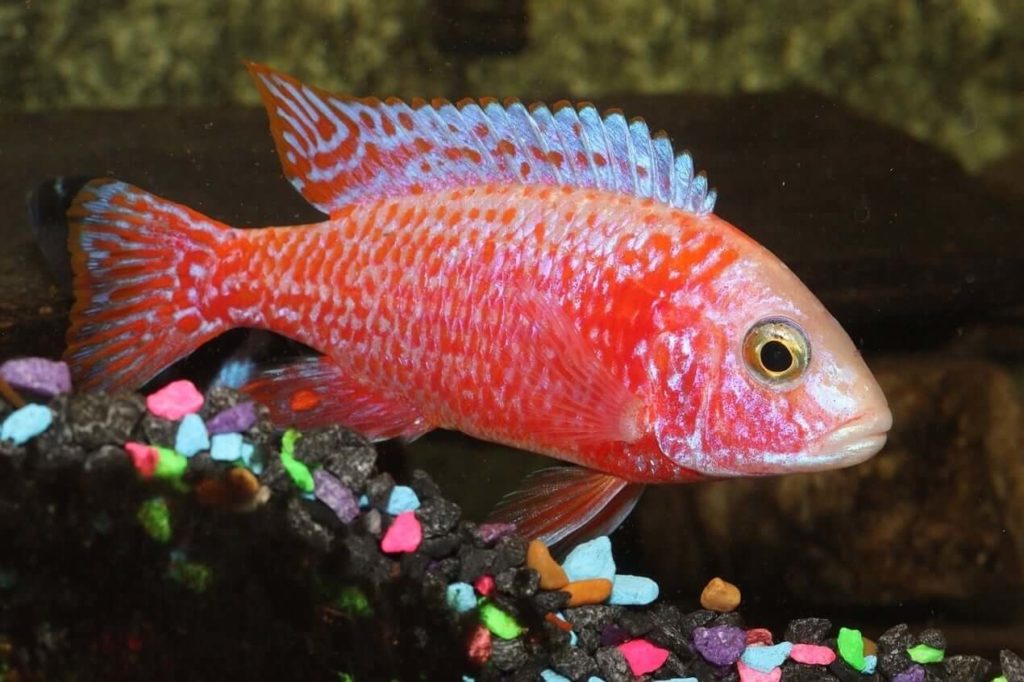
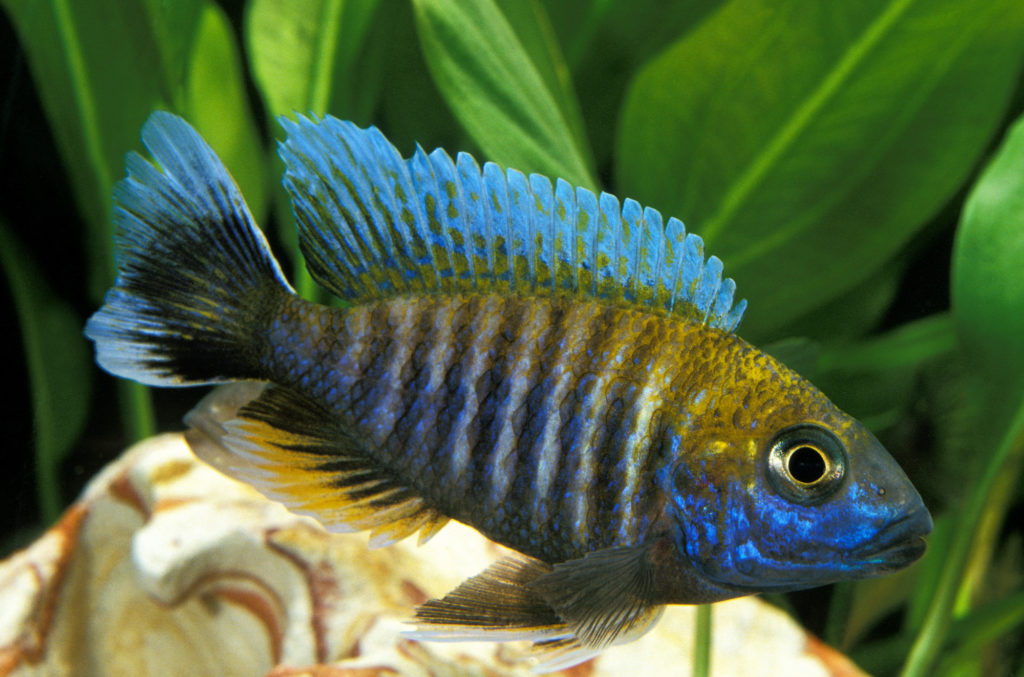
Peacock Cichlid or Emperor Cichlid, aulonocara nyassae
Peacock cichlids are long-bodied fish with large fins. They come is many different natural colors and even more attractive man-made hybrids. Males come in a variety of colors. Females are dull brown/gray. Highly active fish that sets up territory in a cave; they can get aggressive , especially in the presence of females.
Cherry Barb
These bright-red Barbs and not only eye catching and energetic, but also extremely easy to care for. If you are looking for a splash of color to brighten up your fish tank, Cherry Barbs are hard to beat. One great thing about Cherry Barbs is that they are just as pleased by themselves as they are in community tanks with other fish, although Barbs can be a bit skittish when kept around more aggressive fish.
White cloud minnows
Known as well as White cloud mountain minnows (WCMM) are adorable and glitzy little fish. While they are pretty new in fish tank aficionado world, they have become quite popular in a short period of time. Their lively and peaceful nature, coupled with their white bodies and colorful red fins, make them perfect for many aquariums.
Diamond Tetra
Those are real swimming gemstones, that will embellish every fish tank. These tetras are non-aggressive schooling fish and can peacefully interact with most other fish. They are not difficult to keep or feed. Their only requirements is softer water, though they can tolerate moderately hard water. Except from that’s , they are sparkling joy!
Fire Mouth Cichilid
Fire Mouth Cichilid is a perfect fish for new fish keepers. Although they CAN become pretty territorial during breeding season, they are relatively friendly. Adult Cichlids can grow to be around 6 inches long, and their diet can consist of regular flake food. Adult Cichlids can grow to be around 6 inches long, and their diet can consist of regular flake food. To be on the safe side, we recommend you keep these on their own, but if you want to mix them with other species, then make sure you provide rocks or an upturned plant pot where they can hide away in peace, to lay their eggs.

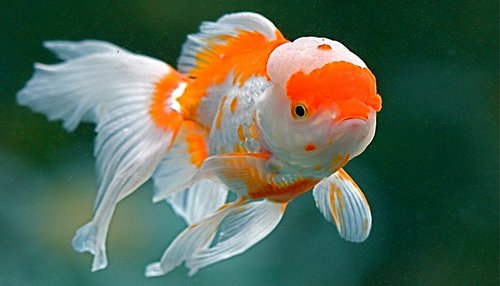
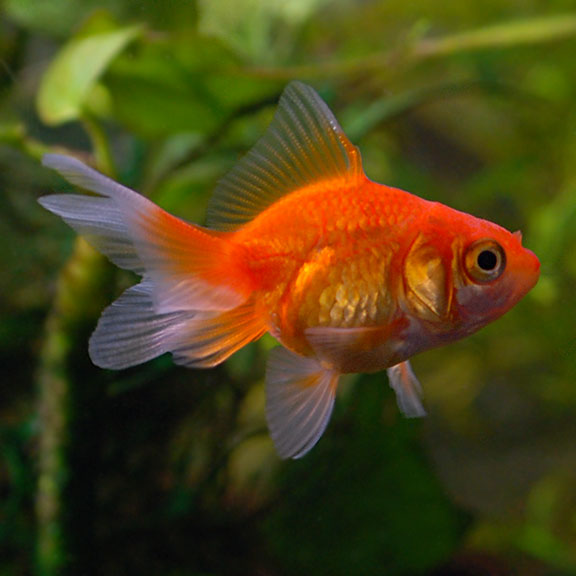
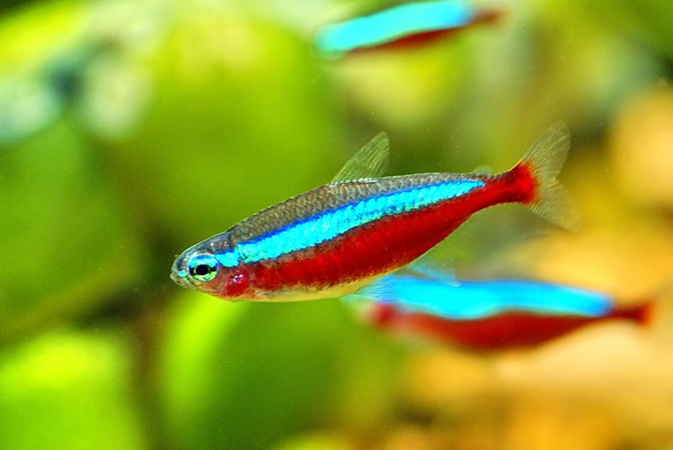

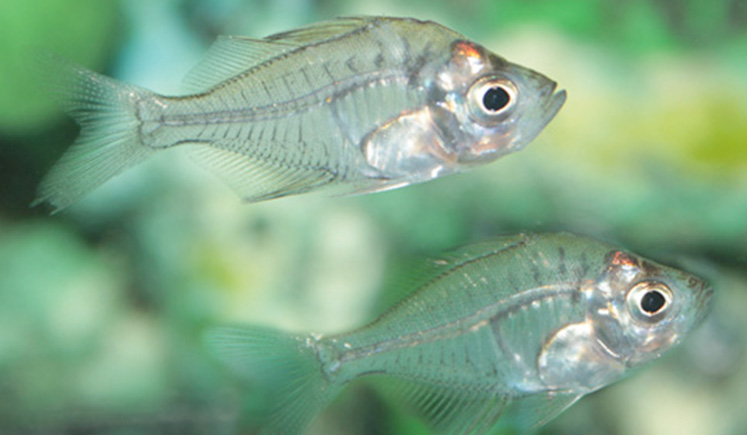
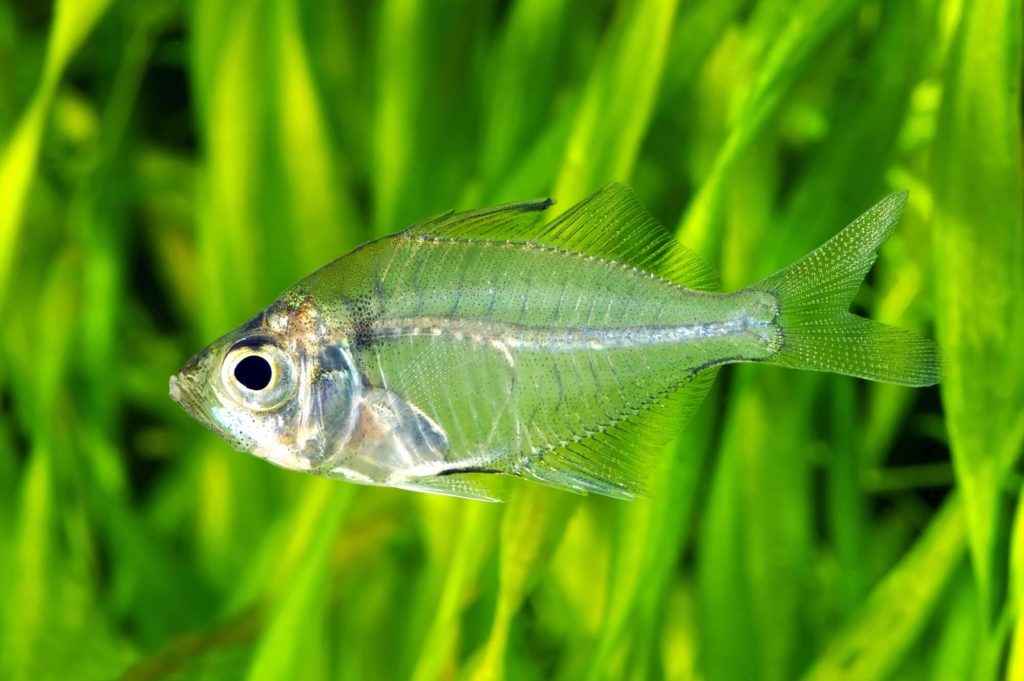
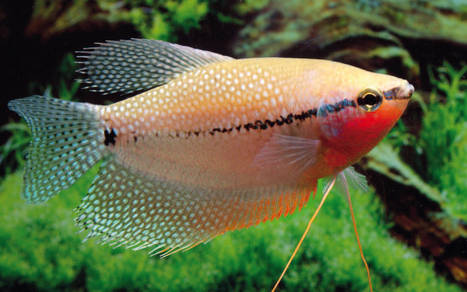
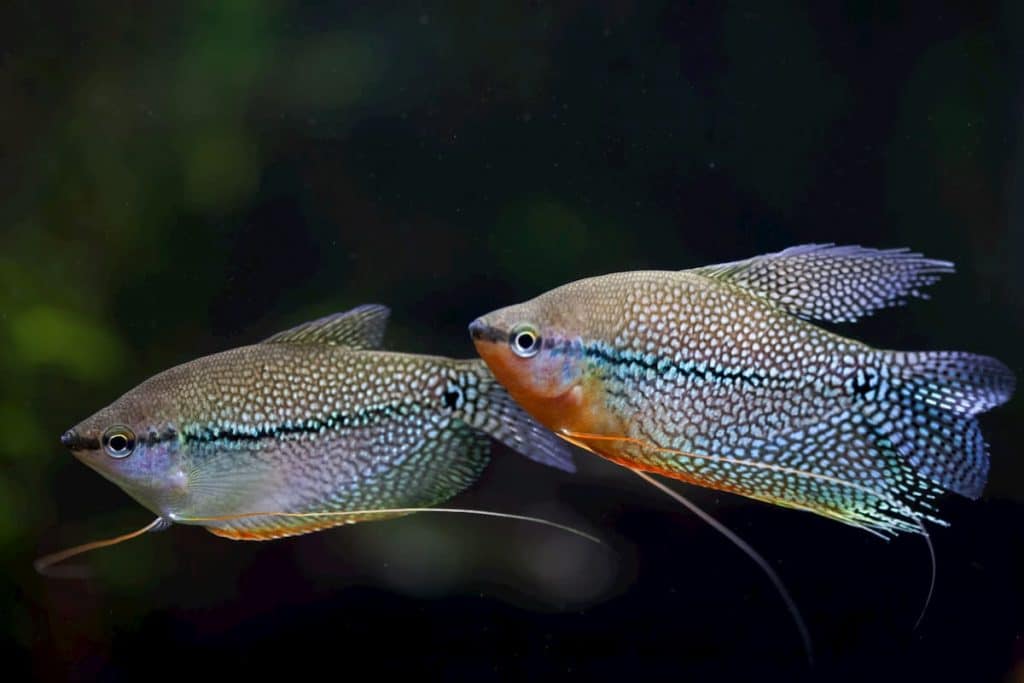
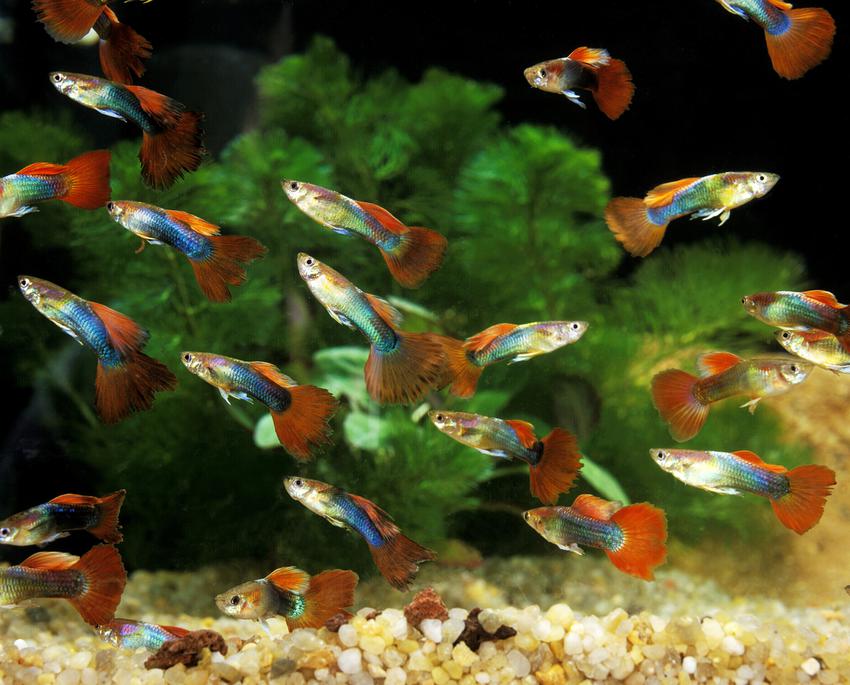
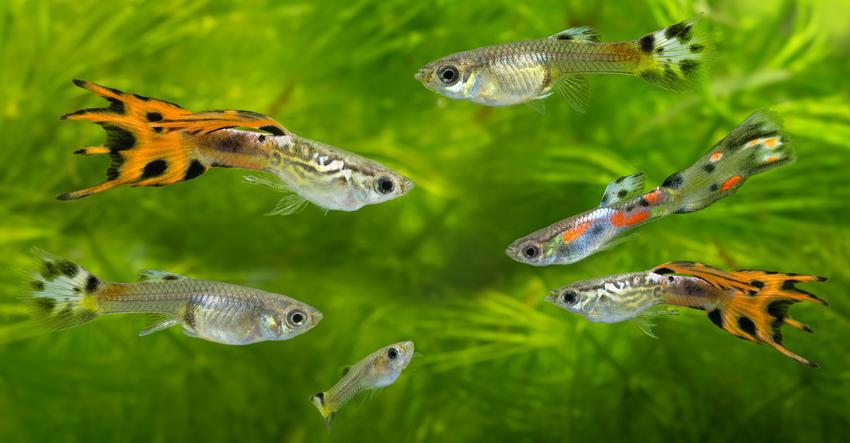
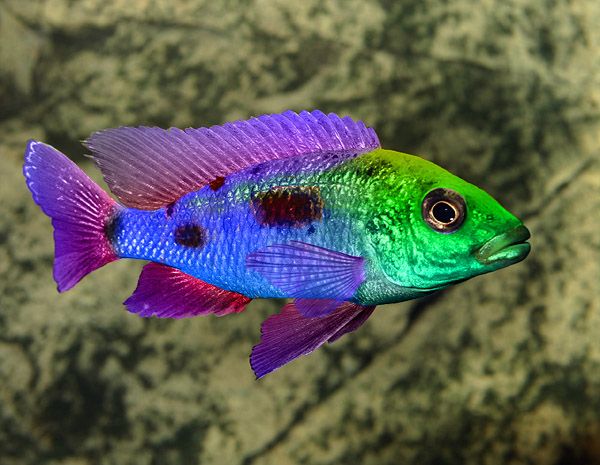


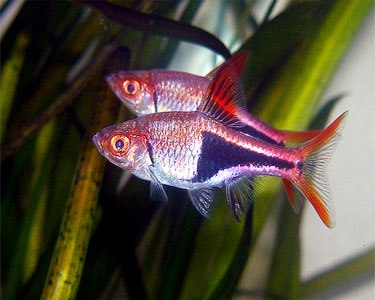
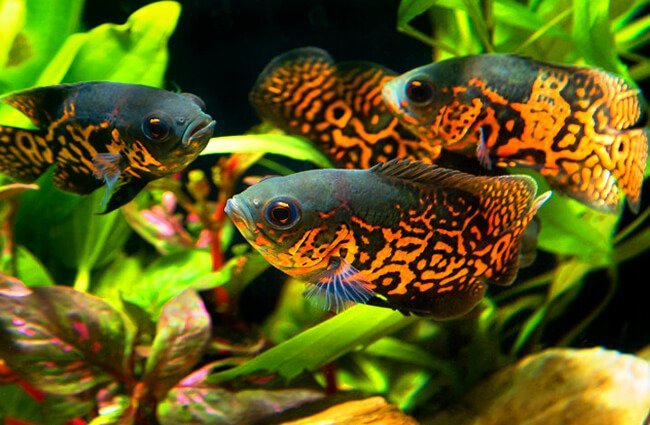
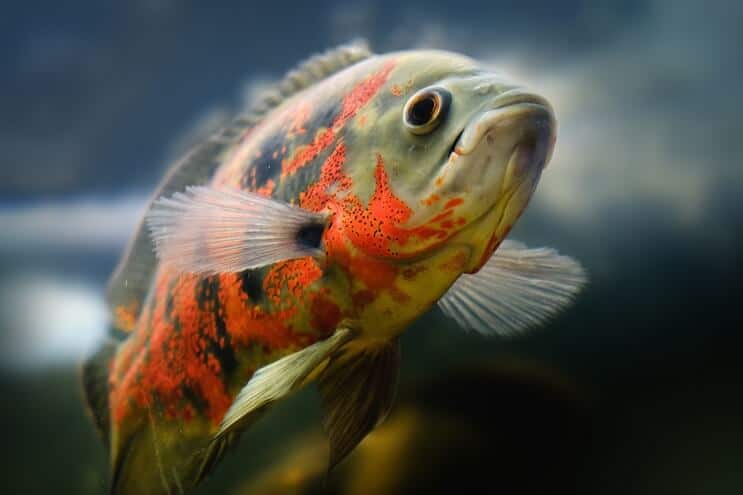
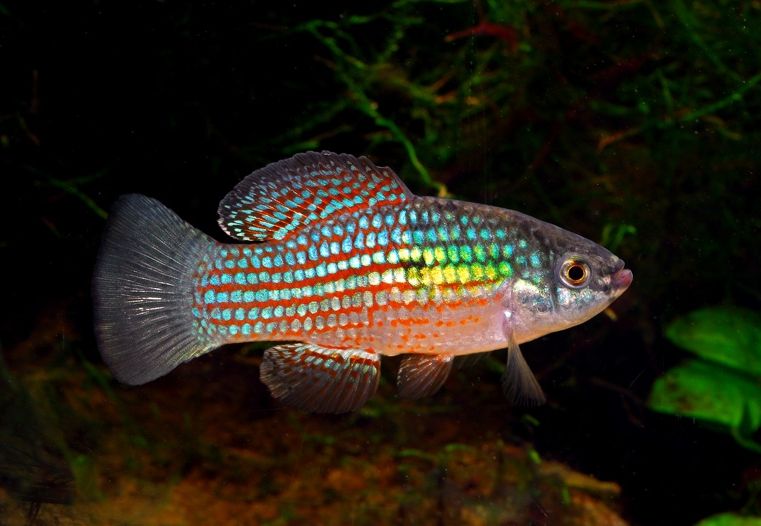
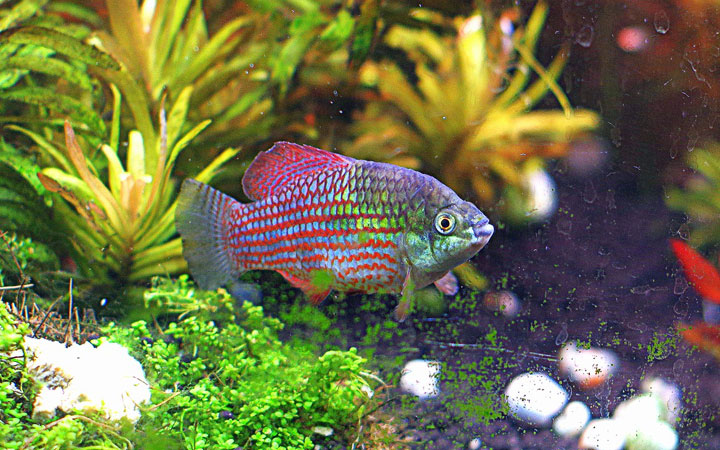
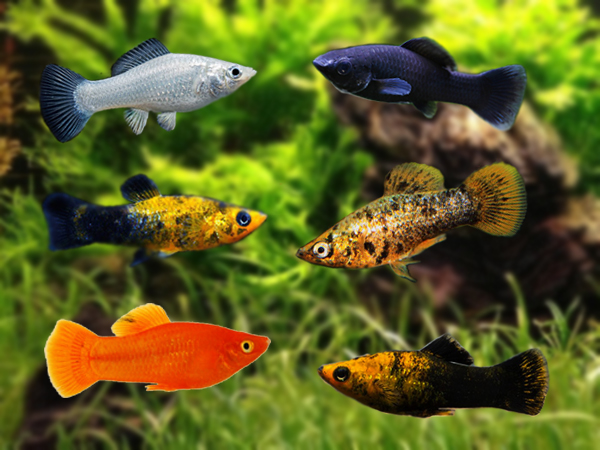
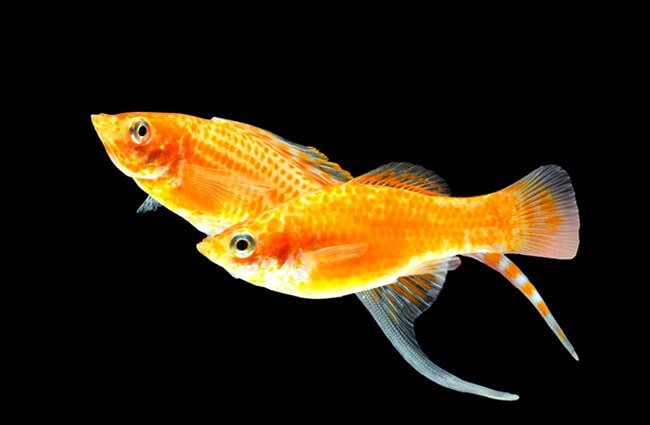
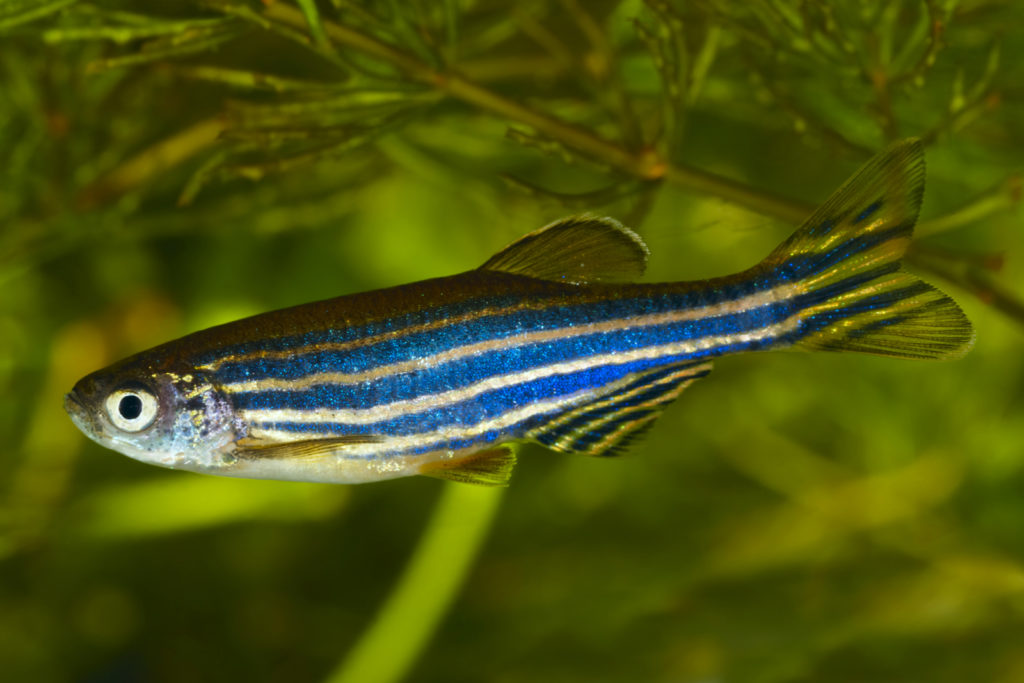


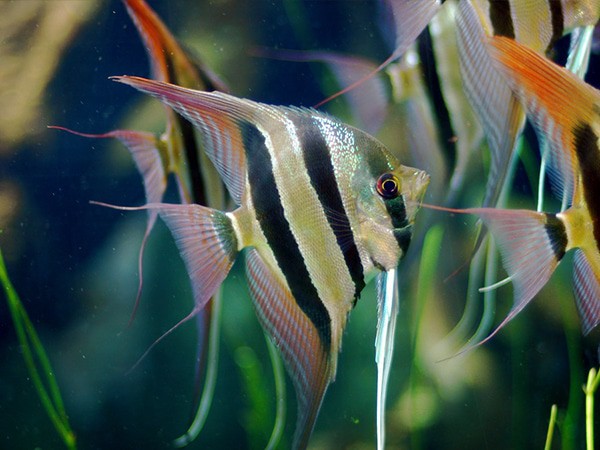

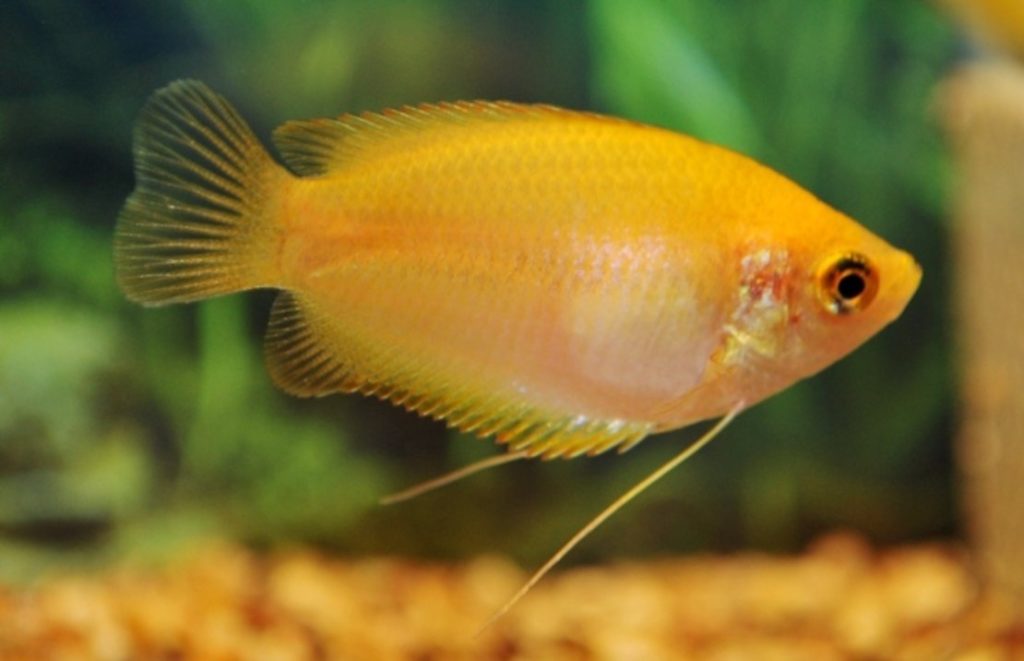
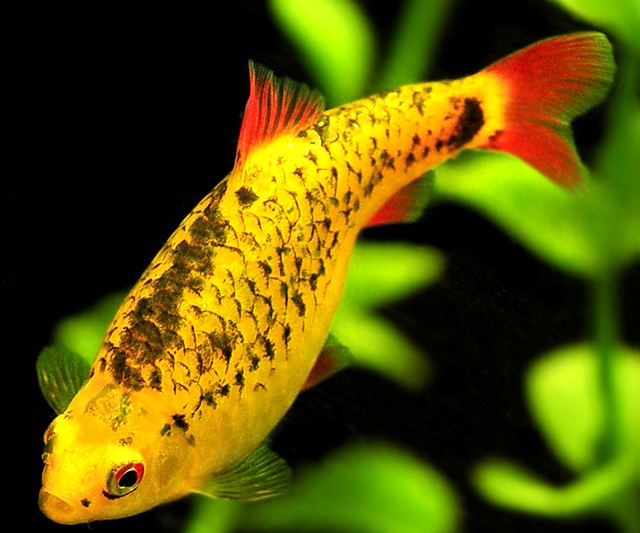
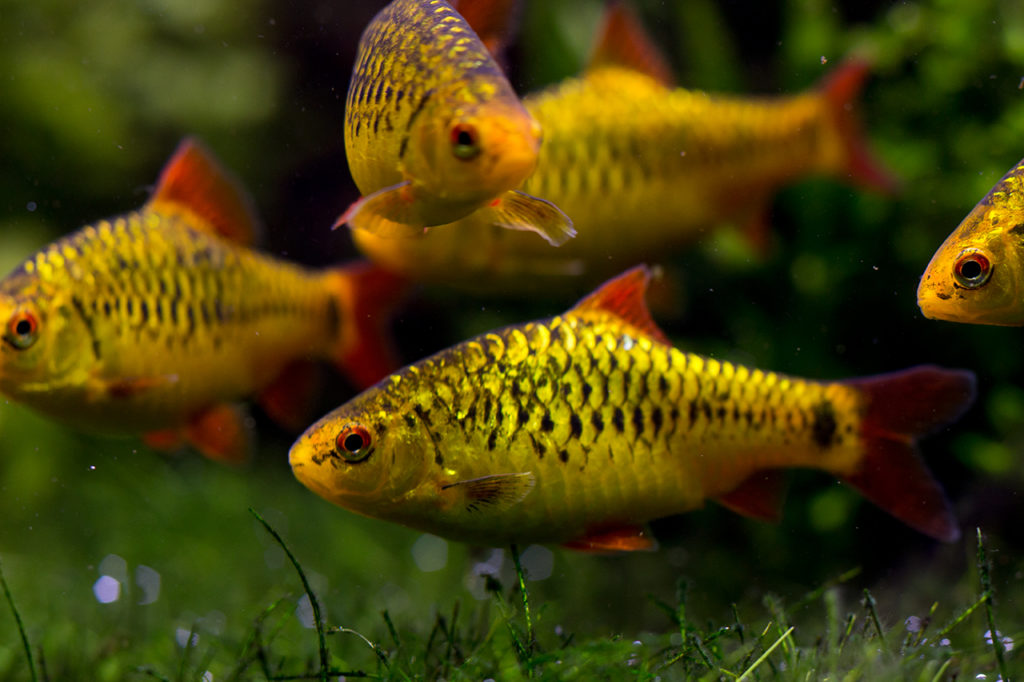
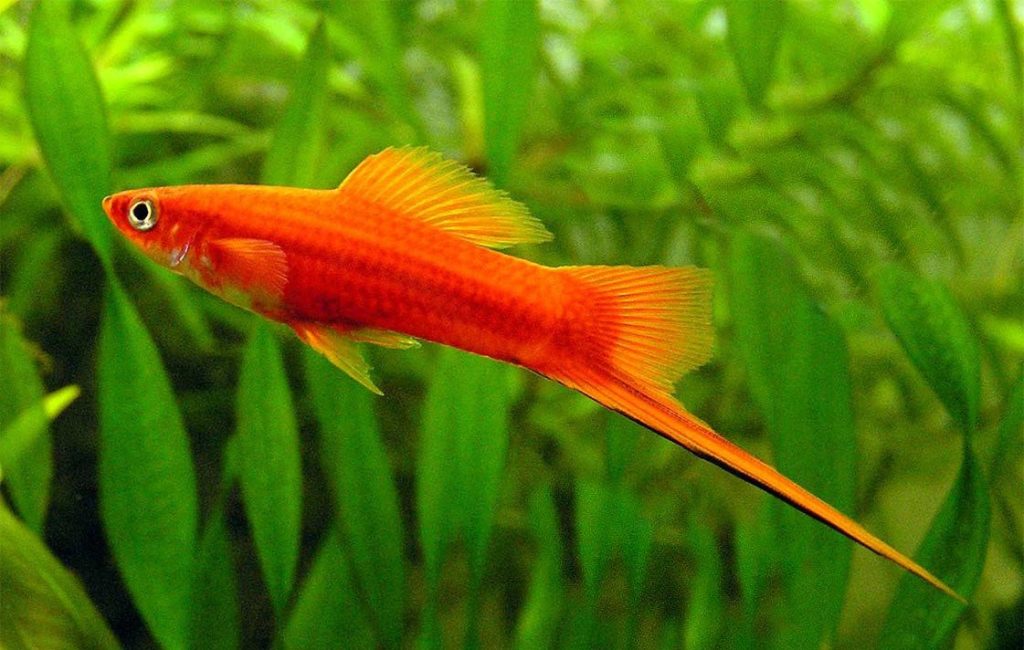
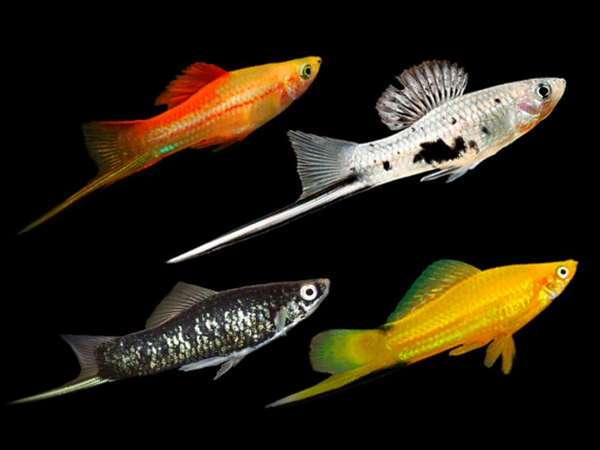
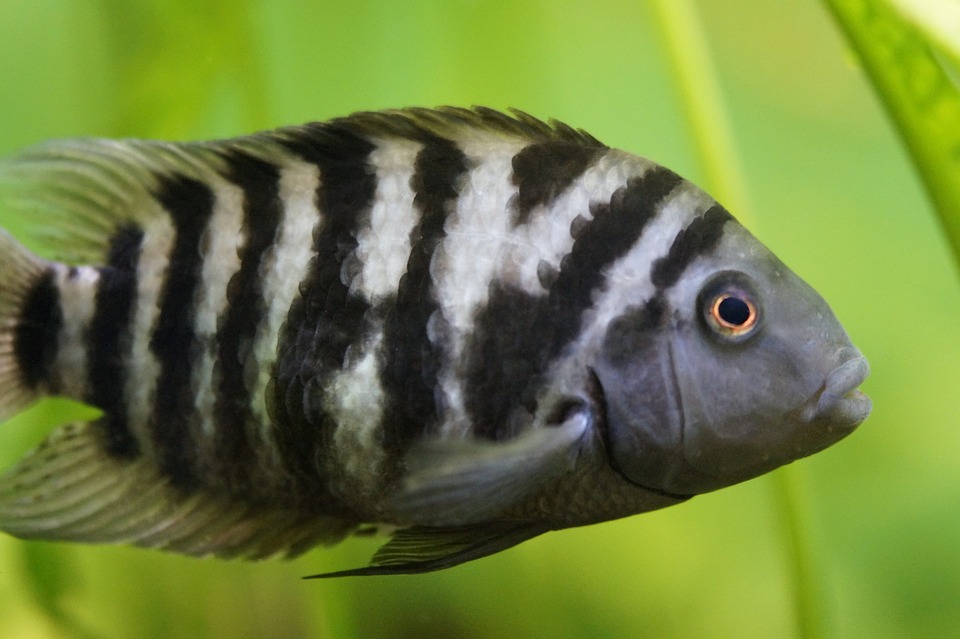
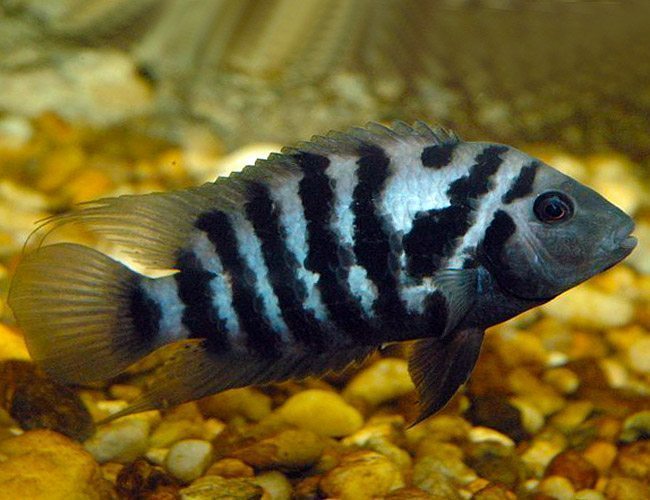
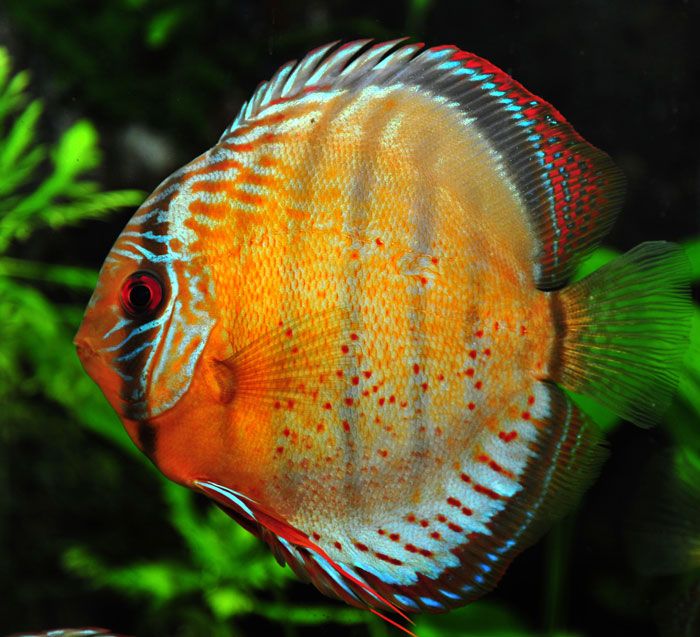
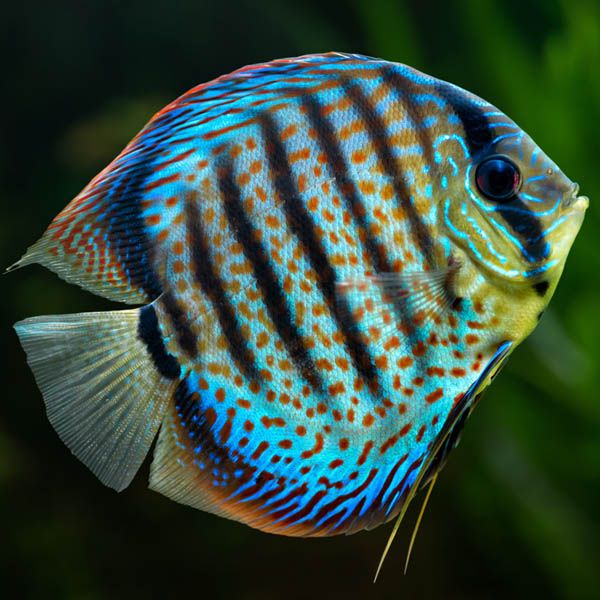
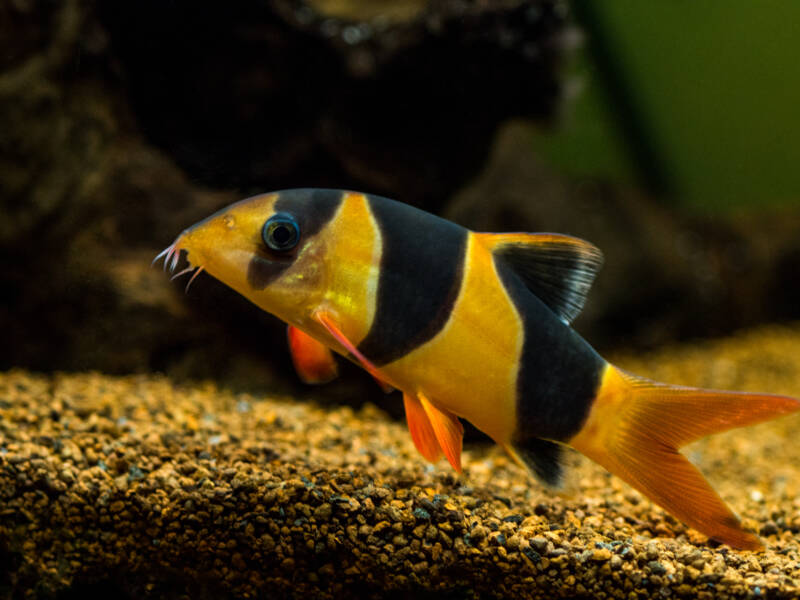
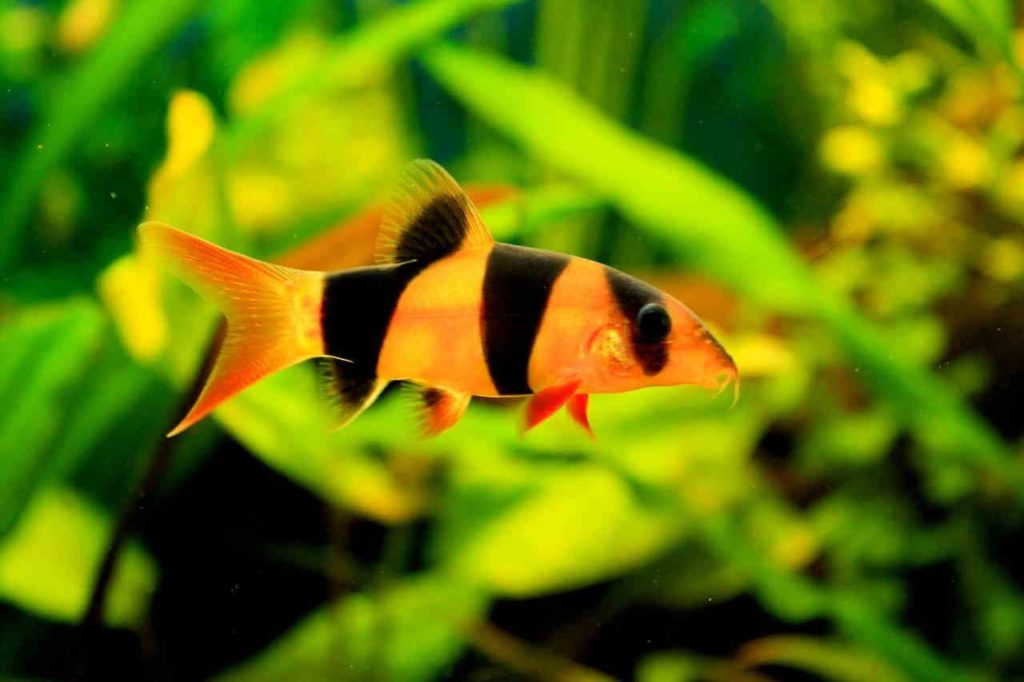
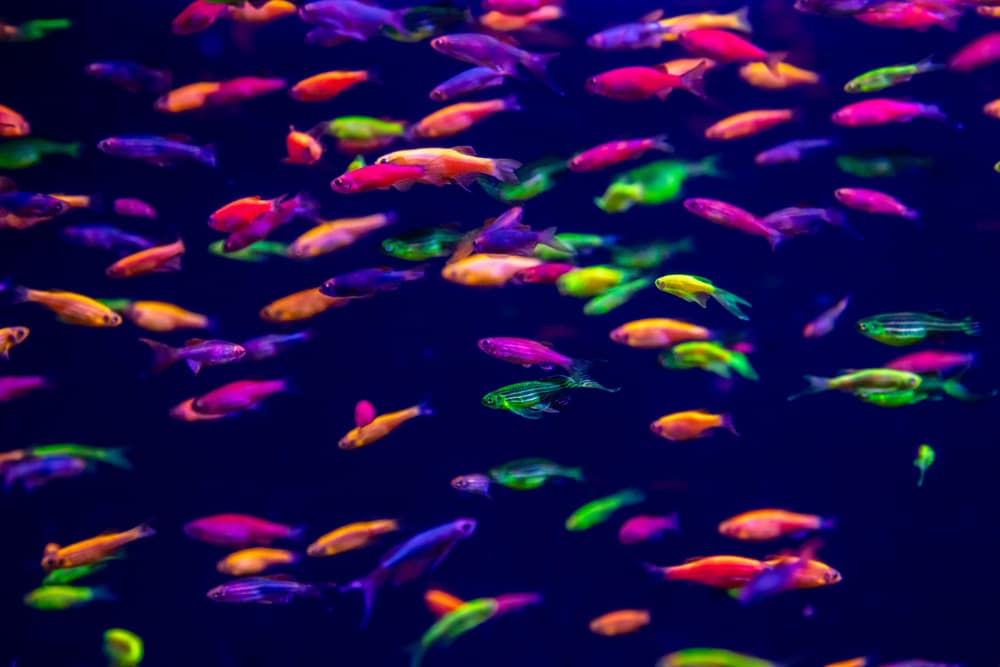
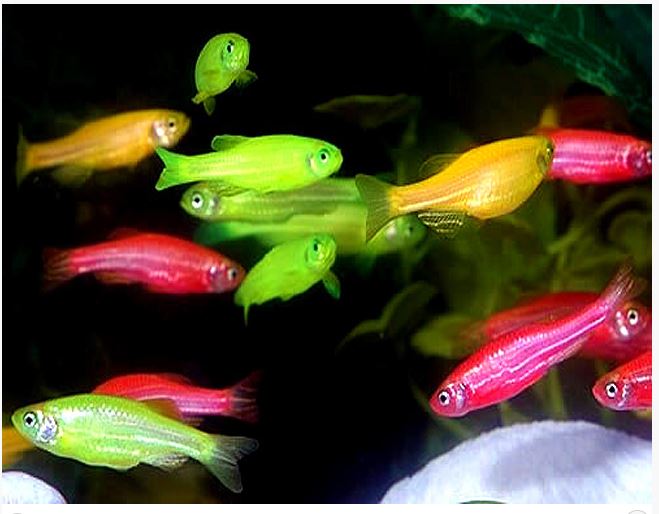
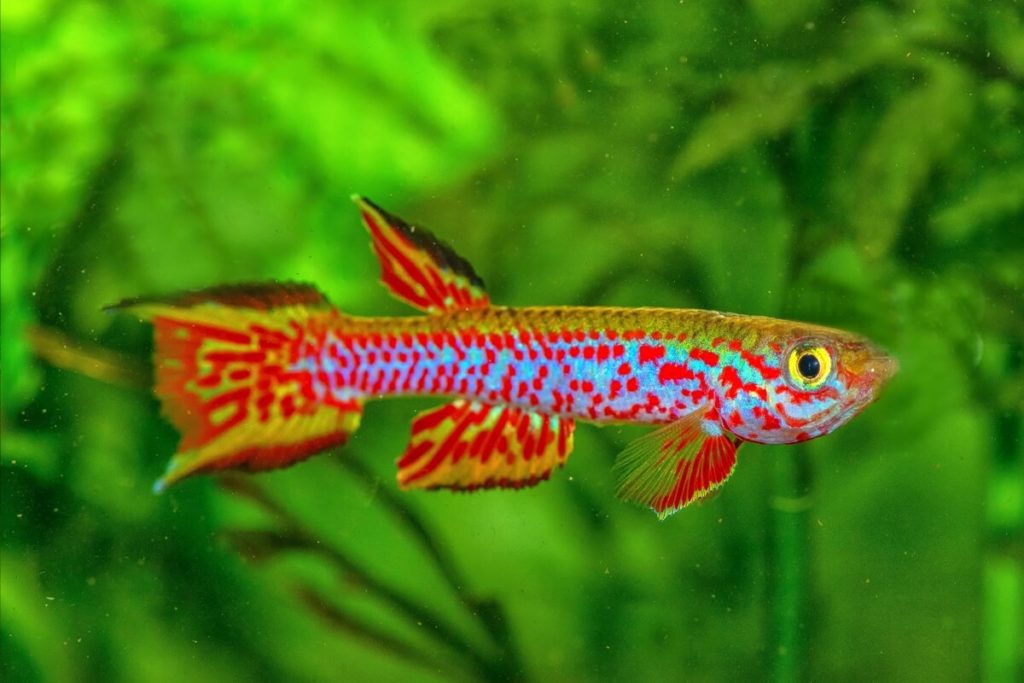
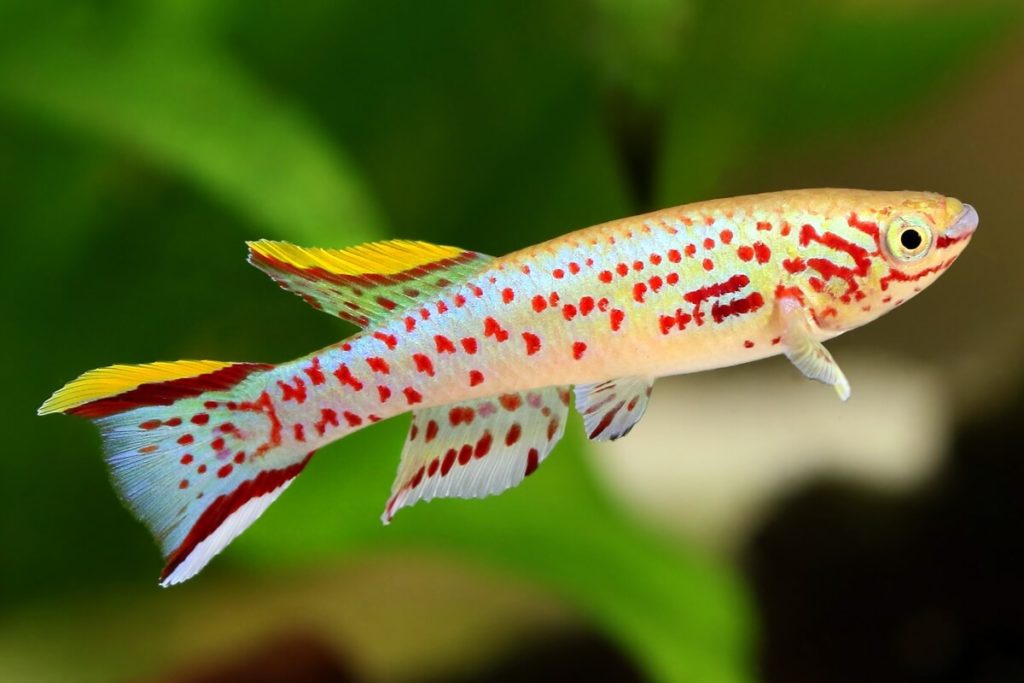
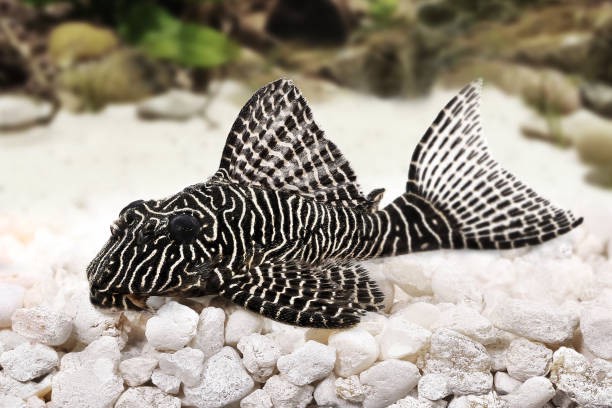
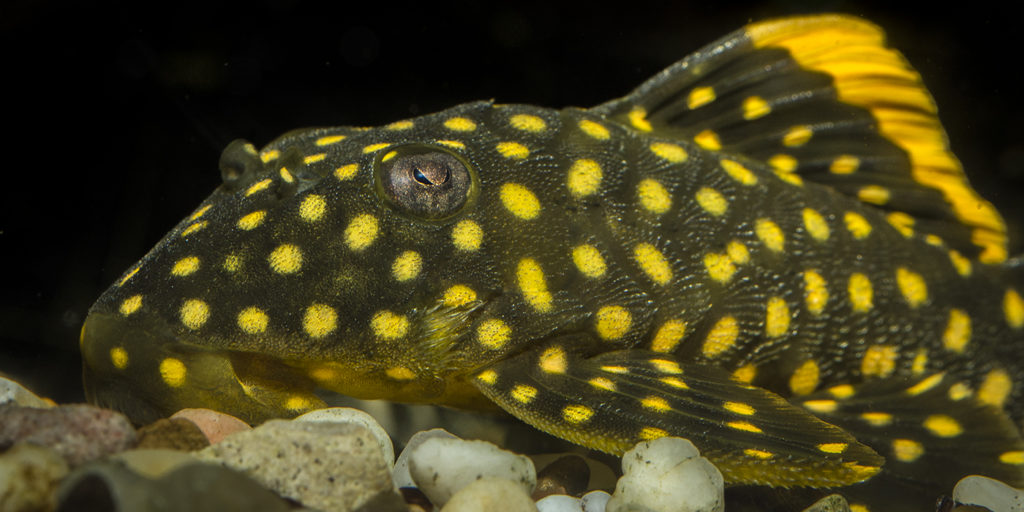

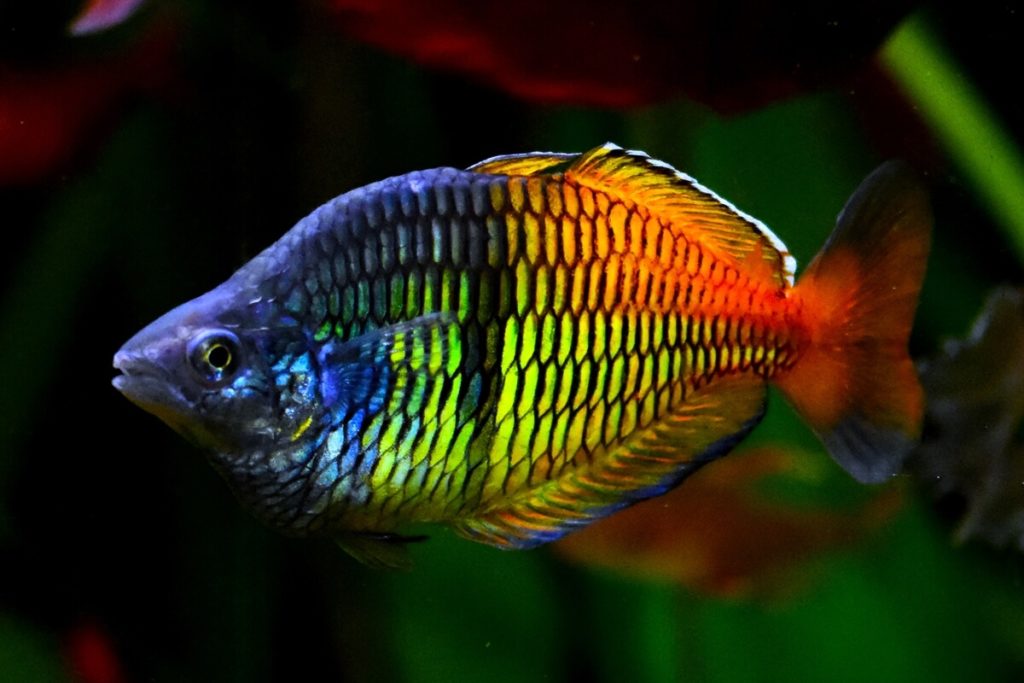
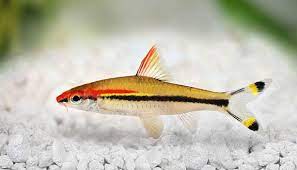
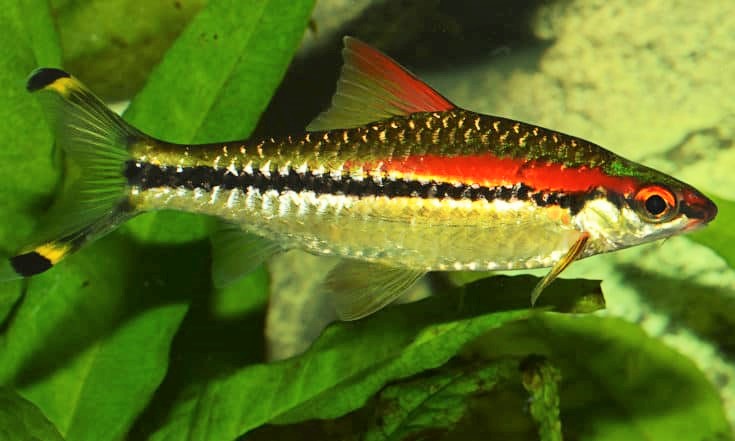
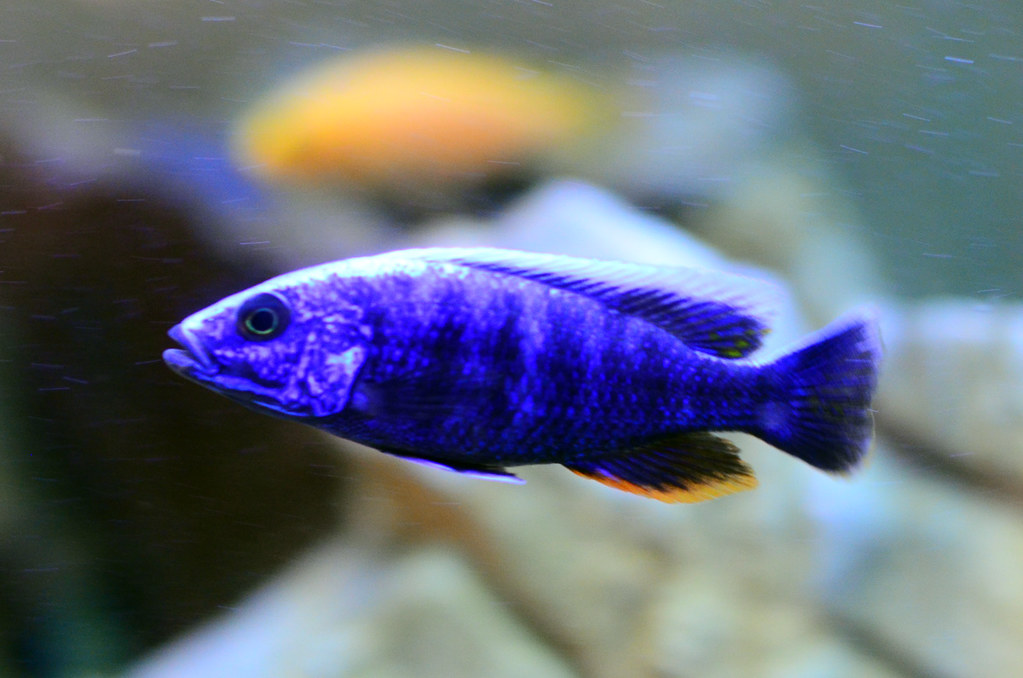
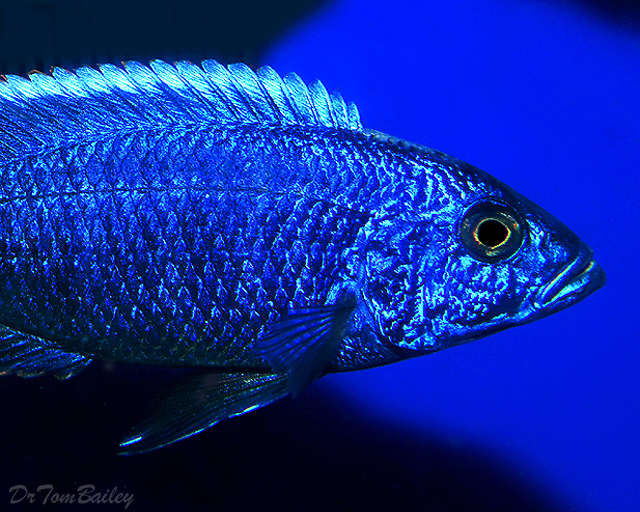
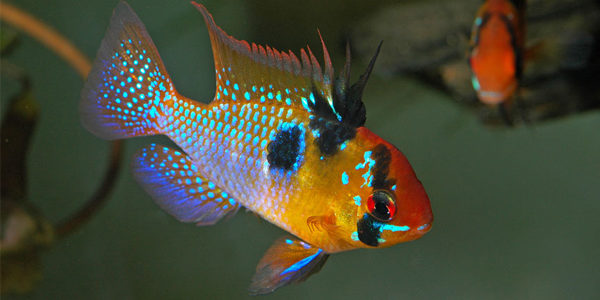

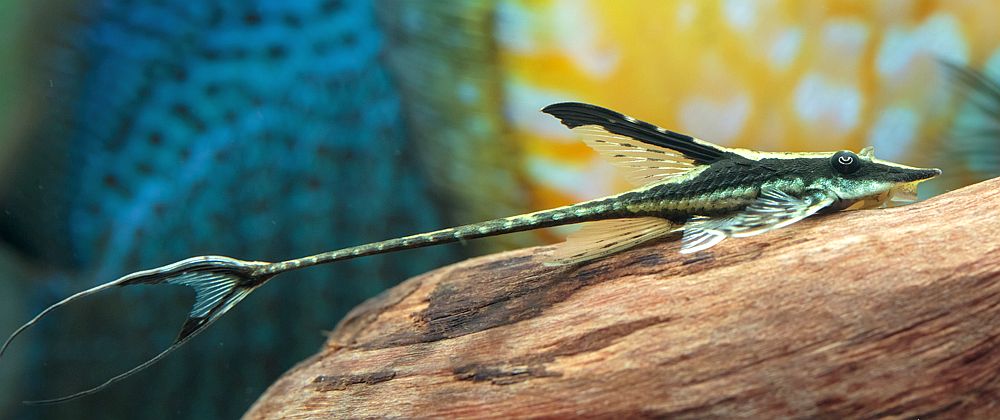

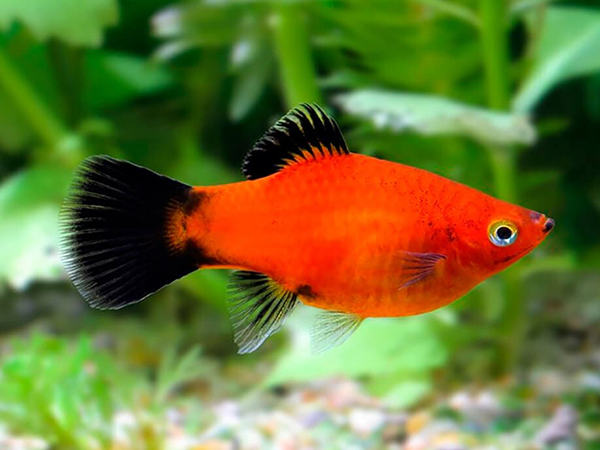
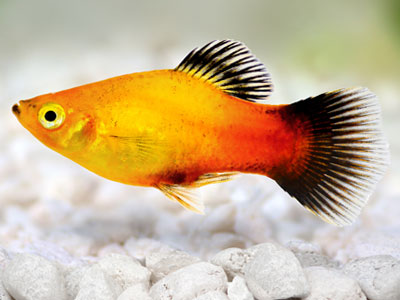
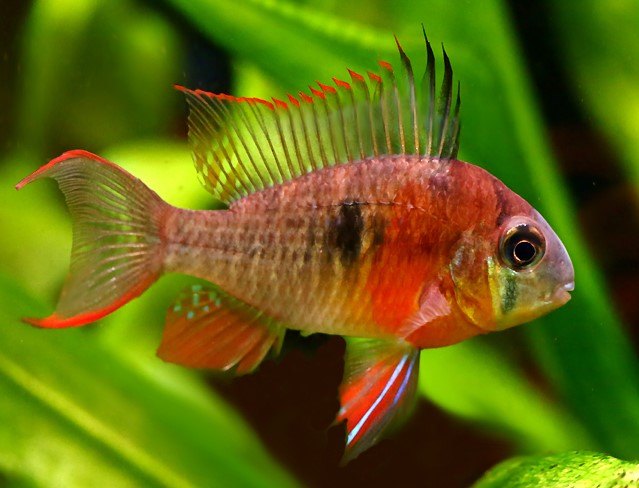
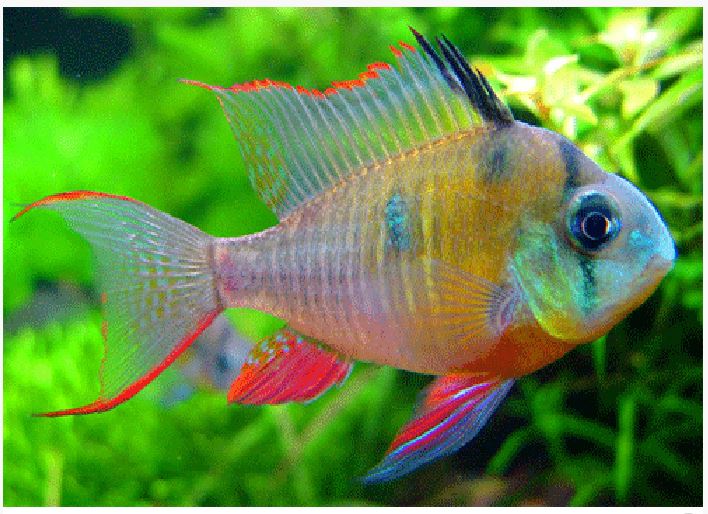
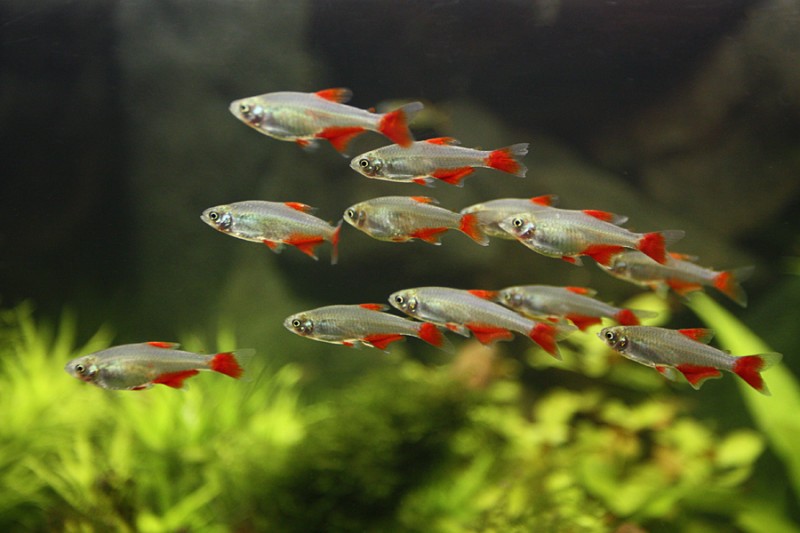
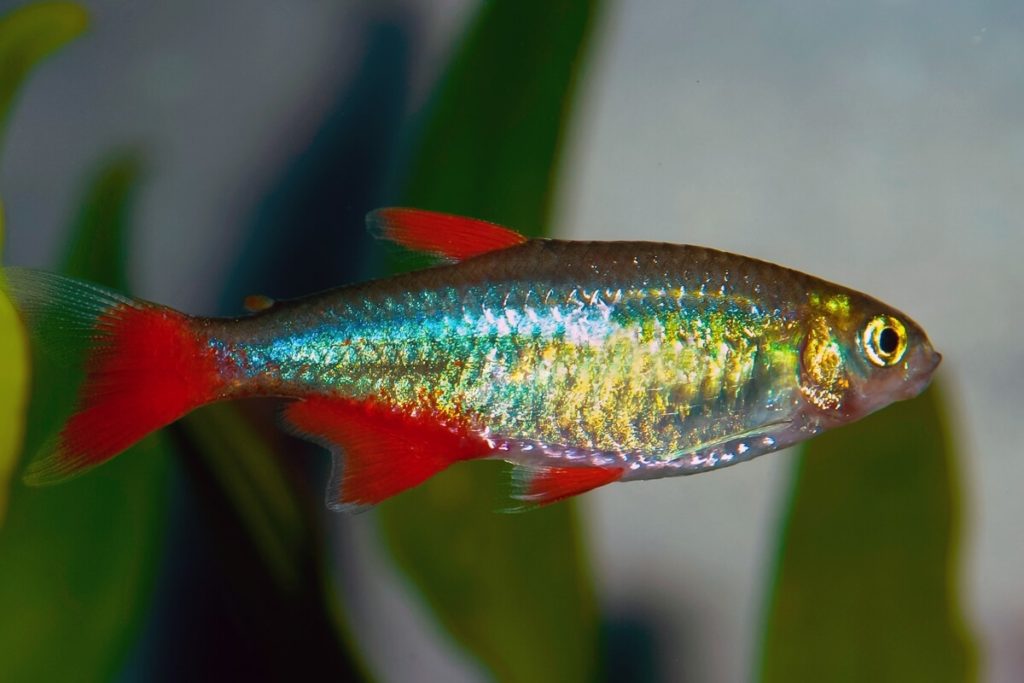
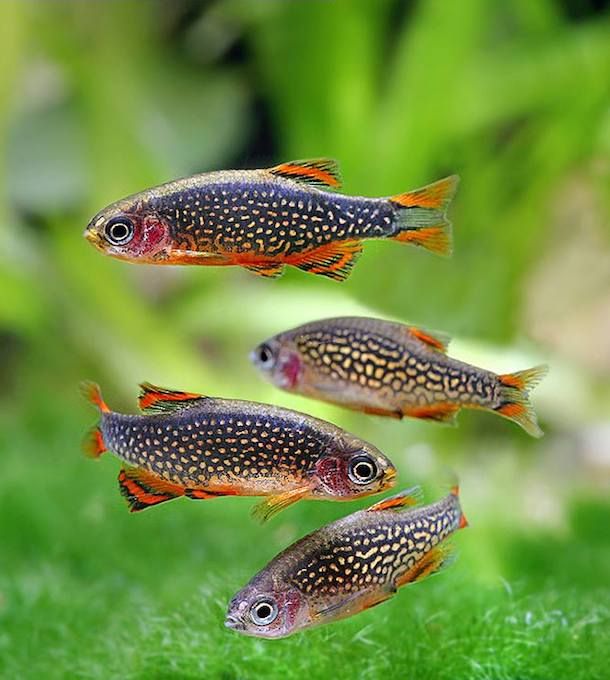
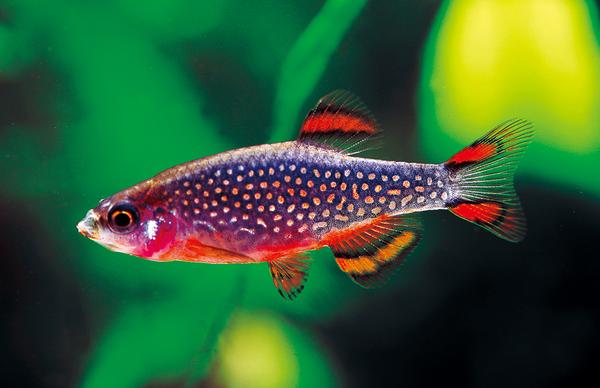
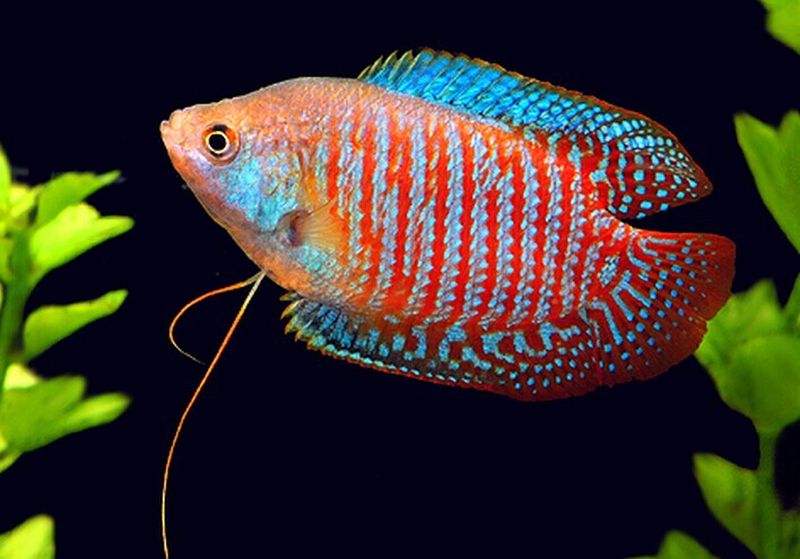
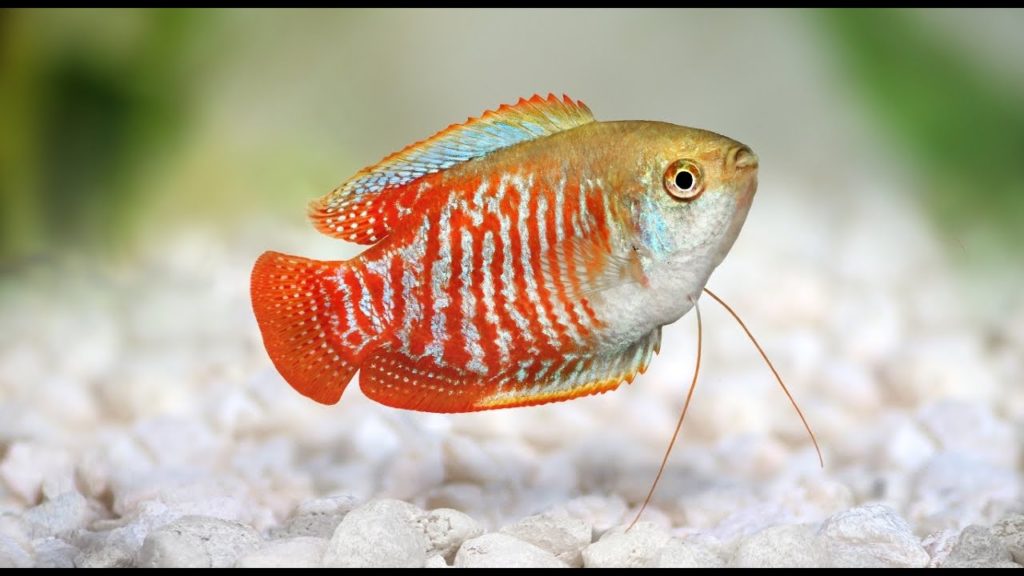

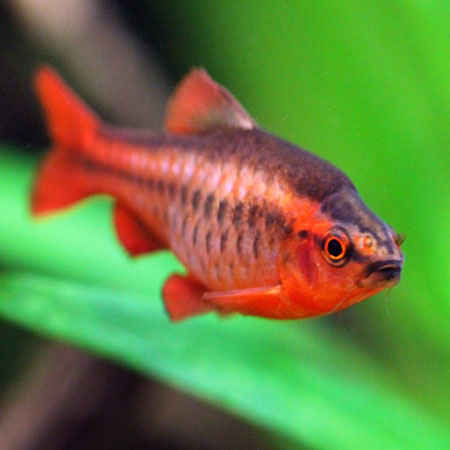
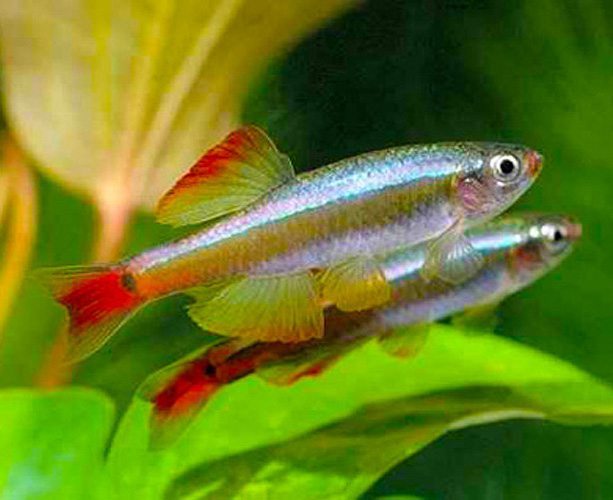
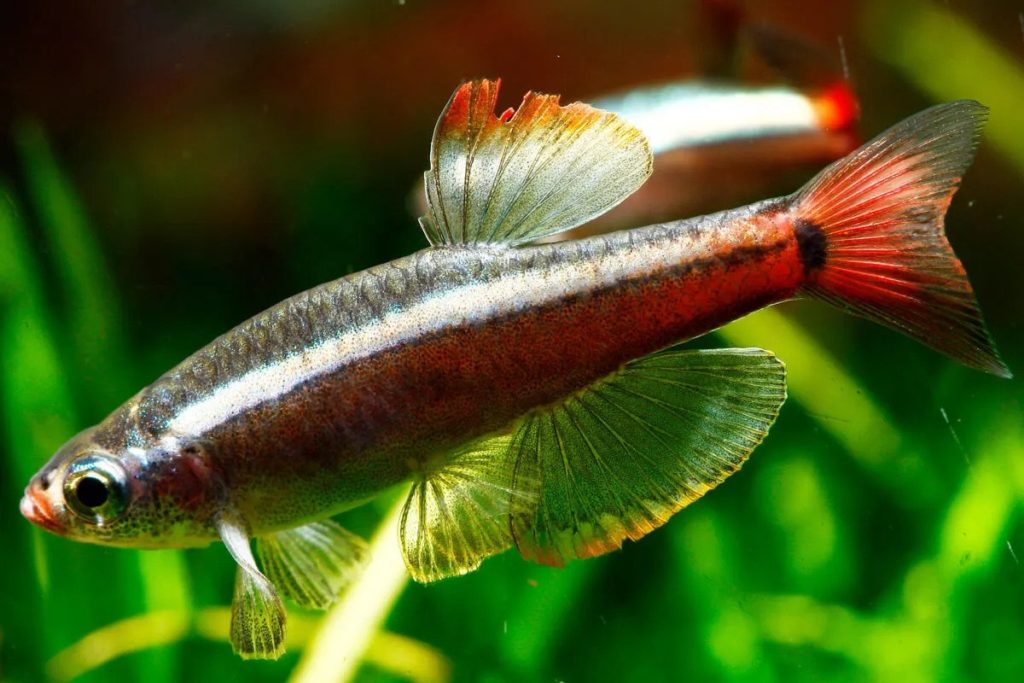
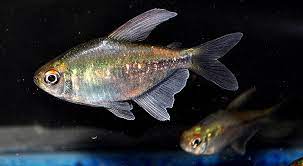
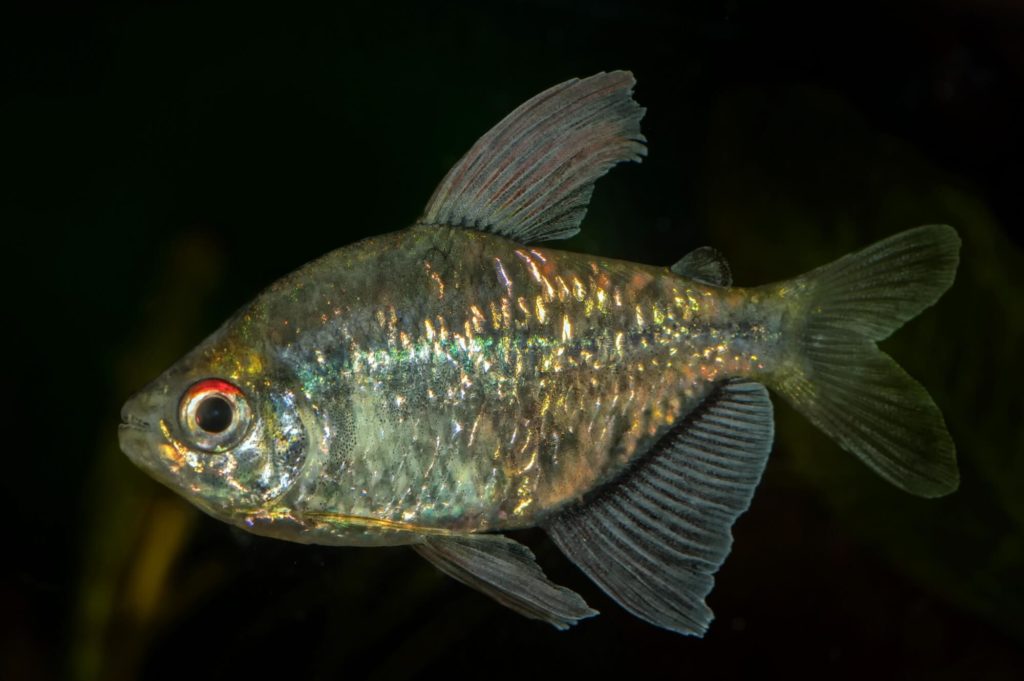
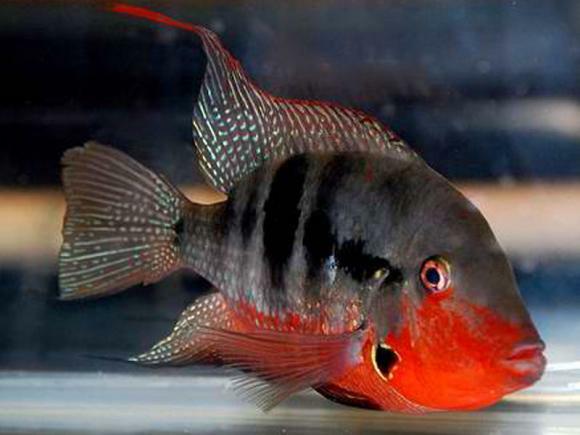
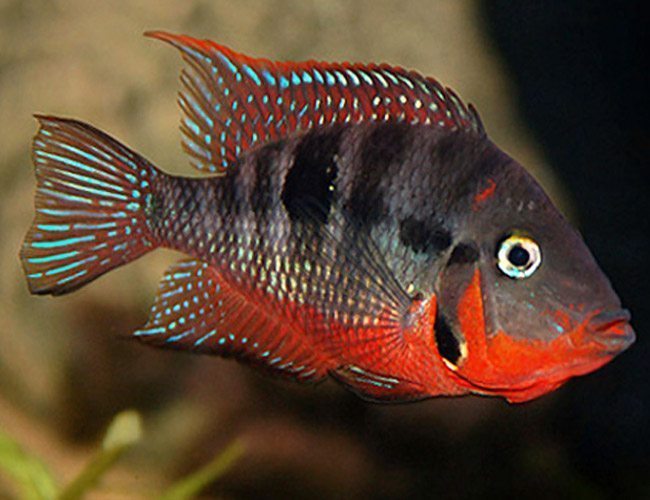



I’d like to thank you for the efforts you’ve put in penning this site. I’m hoping to check out the same high-grade blog posts from you in the future as well. In truth, your creative writing abilities has encouraged me to get my own blog now 😉
Just want to say your article is as amazing. The clarity in your post is just nice and i can assume you are an expert on this subject. Fine with your permission allow me to grab your feed to keep updated with forthcoming post. Thanks a million and please keep up the enjoyable work.
After examine a number of of the weblog posts on your website now, and I actually like your way of blogging. I bookmarked it to my bookmark web site checklist and will likely be checking back soon. Pls check out my web site as effectively and let me know what you think.
I couldn’t resist commenting. Well written!
thank you. I really appreciate it